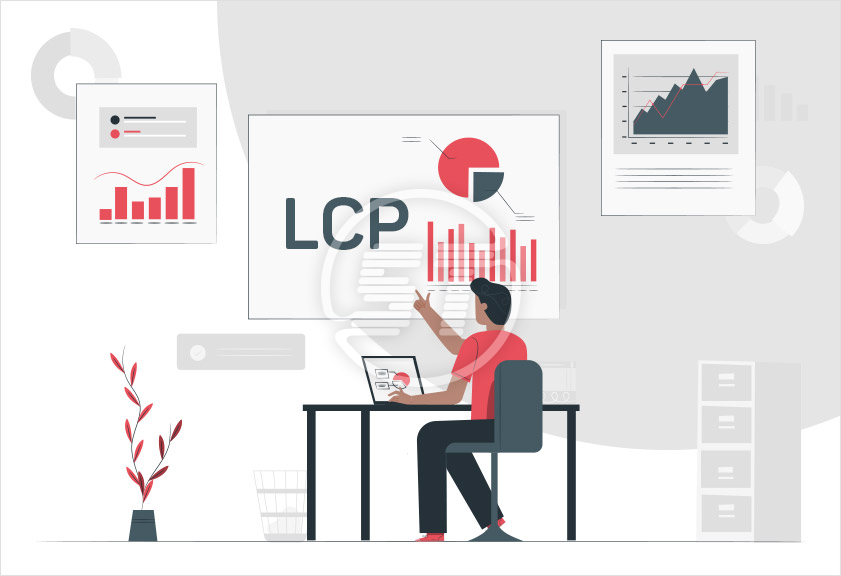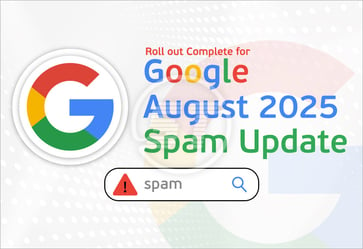Website performance and business success are directly proportional to each other. If your users perceive poor performance from your website, their next click will be on your competition. Google has made it easier for you to optimize the website performance and improve the online business by describing the set of rules to build a thriving website.
User experience is a sensitive matter, and it gets affected by any single loophole on your website. When the website is composed of myriad elements, even any one element can be the culprit behind poor UI UX design. But how will you find that element which is causing trouble to you?
Google has defined the core web vital metrics to make a website user-friendly and performance driven. If you adhere to fulfil the metrics’ requirements, you will have a flawless website that will be able to drive organic traffic. Out of all the metrics (LCP, FID, and CLS), the Largest Contentful Paint (LCP) is one of the most important facets to look over. In the previous article, we have checked how to improve Cumulative Layout Shift score for your website.
Largest Contentful Paint measures the rendering time it takes for the largest visual part of the page to load in the viewport. Optimizing LCP is essential for a website. The high LCP score indicates poor user experience (because the content is taking a prolonged period to load). Thus, you ought to maintain a low LCP for improved UX and website performance.
Peruse this article more to know about LCP and how to improve it for the website performance.
Largest Contentful Paint and its impact on SEO
Your website's LCP should be ideally 2.5 seconds to deliver a high-quality web experience. Few elements like a video, an image, animation, etc. can take a more time to load your webpage. You must optimize these elements to load swiftly. The faster these elements load, the less your users will have to wait, and eventually, the website will get a good ranking on search engines.
If the LCP score is less than or equal to 2.5 seconds, the website is doing very well and has nothing to worry about. But if the score is more than or equal to 4 seconds, you need to pay special attention to optimizing the website otherwise you not only lose users but will also get penalized by Google.
HTML elements, images, videos, scripts, stylesheets, etc. are a few elements that get special consideration by Google to evaluate LCP. The performance of your web page helps users to determine if they should stay on your website or leave the page without taking further actions.
Measuring LCP is not troublesome. There are tools available that help you to calculate LCP easily. Since it is a Google-suggested metric, the measurement tools are also provided by Google. For example, Page Speed Insight Tool, Google Lighthouse, Search Console, Chrome DevTools, GTMetrix, etc. These tools are trustworthy and help you get the exact LCP score of the website.
How to improve the website's Largest Contentful Paint (LCP) score?
To improve your website's largest contentful paint score you should apply some tried and tested techniques and be vigilant about the website's page speed and performance.
Utilize a CDN (Content Delivery Network)
To optimize an image, a third-party image CDN is an excellent choice. Mostly, the image CDN helps you get the innovative quality and best features at minimum investment. An image CDN can be easily integrated with existing cloud storage like Azure, AWS S3, Google Cloud Storage, etc. for image storage.
Image CDN detects if the user's browser supports new lighter image formats (WebP and AVIF) or not and delivers the lightest possible image in real-time. (Please note that WebP images are 30% lighter than JPG formats.)
Image CDN compresses the image to a smaller size without harming its quality. Moreover, it is critical to have responsive images for every device, especially for mobiles. Because Google has mobile-first indexing criteria for websites and if the images on your website are not scaled as per the mobile's layout, it will hamper LCP score for mobile. Image CDN helps you to transform the images into responsive ones by adding the corresponding transformation in the image URL.
Image CDN ensures faster image loading by using CDN, which helps images' downloading from the nearest location server instead of reaching to the main server.
Preload critical resources
Sometimes the browser may face problems in prioritizing loading of a crucial resource that can cause LCP. For example, if a banner image above the fold has been described as a background image inside a CSS file. So, the browser will not know anything about this image until the CSS file will download and parse along with the DOM (Document Object Model) model. Thereby, the browser will not prioritize its loading. To avoid LCP for such resources, you can pre-load them by adding a
tag with a rel=”preload” attribute to the top of your HTML document.<link rel="preload" src="banner_img.jpg" />
Reduce server response time
If your server takes too long to respond to each request, it also affects LCP. To improve server response time, you should analyze the issues that are causing slow server response time. It may be a DB query or page construction that is the reason behind the poor speed.
Caching the DB responses, pre-rendering of pages, etc. are some of the best practices to reduce the server response time. In pre-rendering, the page doesn't get loaded in real-time, but server shows a stored version. This technique speeds up page loading and cuts down the LCP score of your website. If these solutions are not working, then increase the capacity of the server.
Pre-connecting to third-party domains to deliver important above-the-fold content like JS, CSS, and images enhances the loading speed. Since pre-connecting informs the browser to connect with a third-party domain without delay. This can be done by adding the rel="preconnect" attribute of the <link> tag.
<link rel="preconnect" href="https://static.example.com" />
Pre-connect saves the browser connection time. You can also use the dns-prefetch as a fallback in browsers, which don't support pre-connect. 'dns-prefetch' directive instructs browsers to complete DNS resolution with a third-party domain even if the connection is interrupted.
Improve server response time and LCP by caching static assets and HTML responses on the user's device and serving them without connecting to the network. It ultimately improves LCP.
The text-based data you load on your web page must be compressed. You can use compression algorithms like gzip and Brotli to compress the data. JSONs, SVGs, JS & CSS files, API responses, etc. are ought to be compressed using these compression algorithms to speed up the content downloading and reduce the LCP.
Remove render-blocking resources
When the browser receives an HTML page from the server, it must parse it from the DOM tree. If there are external stylesheets or JS files in the DOM, the browser must wait for them before moving ahead to parse the remaining DOM tree. These JS and CSS files are called render-blocking resources and they cause a delay in LCP time.
To reduce the blocking time by JS and CSS files, avoid sending huge bundles of these files to the browser if not needed. If you cannot split the bundle and it is not necessary for the page to load, you can indicate the browser to move ahead without pausing for that bundle. Use 'defer' attribute of the script tag to inform the browser and it will continue with DOM parsing and JS file execution will happen at a later stage. This will help LCP to go down.
Minify the CSS and JS files to reduce white spaces and unnecessary code execution. It helps in quick loading and lowers the LCP score.
Optimize LCP for client-side rendering
Instead of sending the entire JS to the client-side and performing rendering there, you should generate the page dynamically on the server and then send the page to the client's device. This process might increase the time to generate the page but it will reduce the time a page takes to become active in the browser.
Wrapping up
Largest Contentful Paint (LCP) is essential to optimize for a better user experience and to maintain a good ranking on search engines. When you optimize your website for LCP, you improve its overall performance and Google starts loving your website more. Since LCP is one of the page experience defined by Google, it is mandatory to maintain its score to remain visible on web crawlers and to reach your audience.
Skynet Technologies provide you with best practices to improving core web vitals to enhance the user experience by several folds and boost conversions. We have a cross-functional team of developers, designers, and marketers who all work together to provide the best Google page experience for the websites. We have been offering various SEO services that improve your SERPs and are quick to adapt to any latest changes in Google search algorithms. Get in touch with us at hello@skynettechnologies.com or submit the following request-free quote form to know more.



